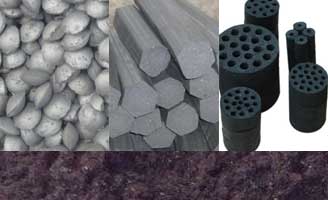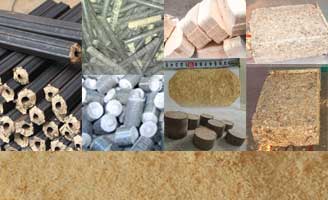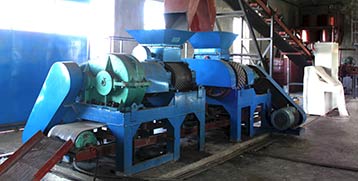Review of honeycomb briquettes, briquette machine, formula, etc.
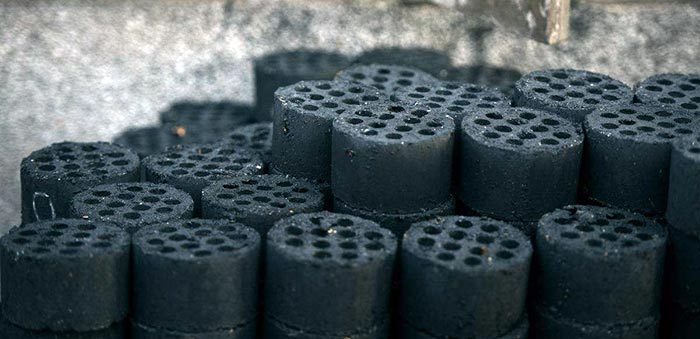
Honeycomb briquette or another name as beehive briquette is a very common coal/charcoal fuel briquette especially in domestic usage. The name comes from its shape which is much similar to the honeycomb. It originated in Europe and was introduced to Japan in the late 18th century through the Netherlands and Italy. Currently mainly used in the area of East Asia and Southeast Asia.
Why we are using the honeycomb briquette
The most common raw material that used worldwide for making honeycomb briquette is coal dust. Compare to using bulk coal, there are benefits we can get from using honeycomb briquette below.
- Reduce air pollution
Study shows, compared with using bulk coal, use honeycomb coal briquette can reduce carbon monoxide 70% to 80%, sulfur dioxide 40% (reinforcing sulfur agent), smoke and benzopyrene and other harmful substances 90%, it can also reduce the smoke blackness.
- Increase the heat efficiency
The thermal efficiency of burning bulk coal in civilian stoves is extremely low, usually around 10%, burning coal balls is about 20%;
Compare to which the thermal efficiency of burning bottom ignite honeycomb briquette in ordinary stoves is about 25% to 28% (about 40% for high-performance stoves). The thermal efficiency of top ignite honeycomb briquette with good performance is about 50% to 60%. That’s very energy efficient.

Honeycomb briquette types (coal type)
Common honeycomb briquette
The common honeycomb briquette is just a briquette which is quite similar to the bulk coal.
Fast ignite honeycomb briquette
A fast ignite honeycomb briquette is a briquette which has a part easy to set the fire. According to the ignition part place, it can be divided into two types:
1. bottom ignite honeycomb briquette
Bottom ignite honeycomb briquette means there’s a ignite layer is in the lower part of the briquette
It’s easy to make. But it has disadvantages.
- Relatively low combustion efficiency
- Hard to reignite
2. top ignite honeycomb briquette
Top ignite honeycomb briquette means the ignite layer is in the upper part of the briquette
This is a new type honeycomb briquette with several advantages.
- Complete combustion
- High combustion efficiency
- Low air pollution
- Easy to use
These advantages all due to the top-down combustion method.
Honeycomb briquette formula (coal type)
The composition of honeycomb coal is not fixed. There are many kinds of formulas due to cost considerations and local conditions. Some formulations are described below.
For a common honeycomb briquette, that would be quite simple, use coal dust, binder, and some other additives like coal sludge, quicklime, etc
Common binder: clay, starch, CMC, etc. (Find more coal binders)
Clay is the most common binder that is used to make honeycomb briquette, but the rate should be controlled as it will reduce the quality of the briquette, like briquette calorific value, etc.
Quicklime should be added for several reasons. First, it’s a type of binder which will improve the strength of the briquette. Second, it will help to reduce the sulfur dioxide emissions when burned. Chemical reaction as follow:
- CaO+SiO2 — CaSO3
- 2CaSO3+O2 —2CaSO4
For a fast ignite honeycomb briquette ( top type ), it is divided into three pieces: ignition layer, fire layer, briquette layer

Ignition layer materials
Oxidant: Potassium nitrate, cerium nitrate, sodium nitrate, etc.
Flammable material: Charcoal, lignite, semi-coke, etc.
Binder: starch, etc.
The fire layer is used to reduce the cost by reducing the height of the ignition layer. The same materials with ignition layer can be used but should be at a different rate. Control the rate and make this layer with an ignition point around 300-350 Celsius.
Briquette layer is the main body of the layer which is the same with common honeycomb coal briquette.
The honeycomb briquette making process
No matter the material is charcoal or coal, honeycomb briquette plant is easy to set up. A simple briquette process follow the way below:
Raw material → Crush → Mix → Briquette
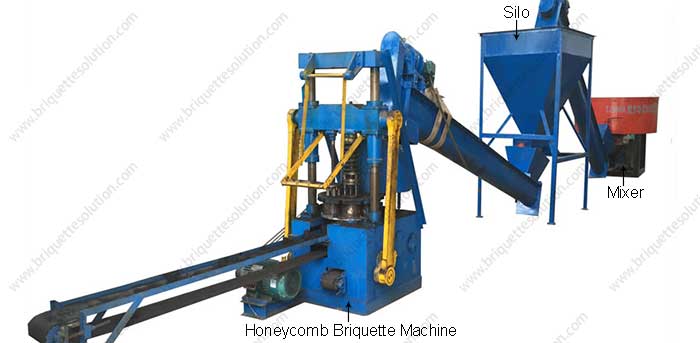
No matter the raw material is coal or charcoal, in order to get the requirement of briquetting, prepare the raw material to a suitable size is the first step.
After that, it comes to the mixing step, there raw material mixes with binder and other additives, common mixer like wheel mill or double shaft mixer is usually used in this step.
Mixed materials then briquette by the coal briquette machine (charcoal briquette machine) with the honeycomb shape mould.
Honeycomb briquette machine
Honeycomb briquette machine is a mechanical briquette machine with mould of honeycomb shape. Change the mould will help us to make different shapes of honeycomb briquette.
How to check the honeycomb briquette quality
A good quality honeycomb briquette should have these features.
- The calorific value can reach 16000-20000 kJ/kg;
- Can withstand pressures greater than 70kg;
- Easy to ignite;
- No smoke or little smoke when burning;
- Have a certain thermal strength.
Usage of the burnt ash
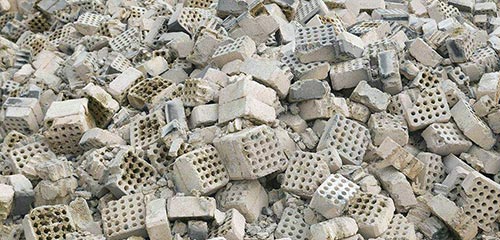
The ash from charcoal honeycomb briquette can be used as a kind of fertilizer.
And ash from coal honeycomb briquette has other usages as follow.
- Cemented building materials and wall materials;
- Cement mixed material;
- Light concrete aggregate;
- Road material;
- Sandblasting sand;
- Brick making;
- Etc.
Other things about honeycomb briquette
- Biomass can be used as one of the raw materials. But add biomass will make the briquette with shorter burning time and calorific value.
- The burning time of honeycomb briquette is about 1 hour.
- Add too much clay can reduce the cost but make the honeycomb briquette with low calorific value and more ash.
